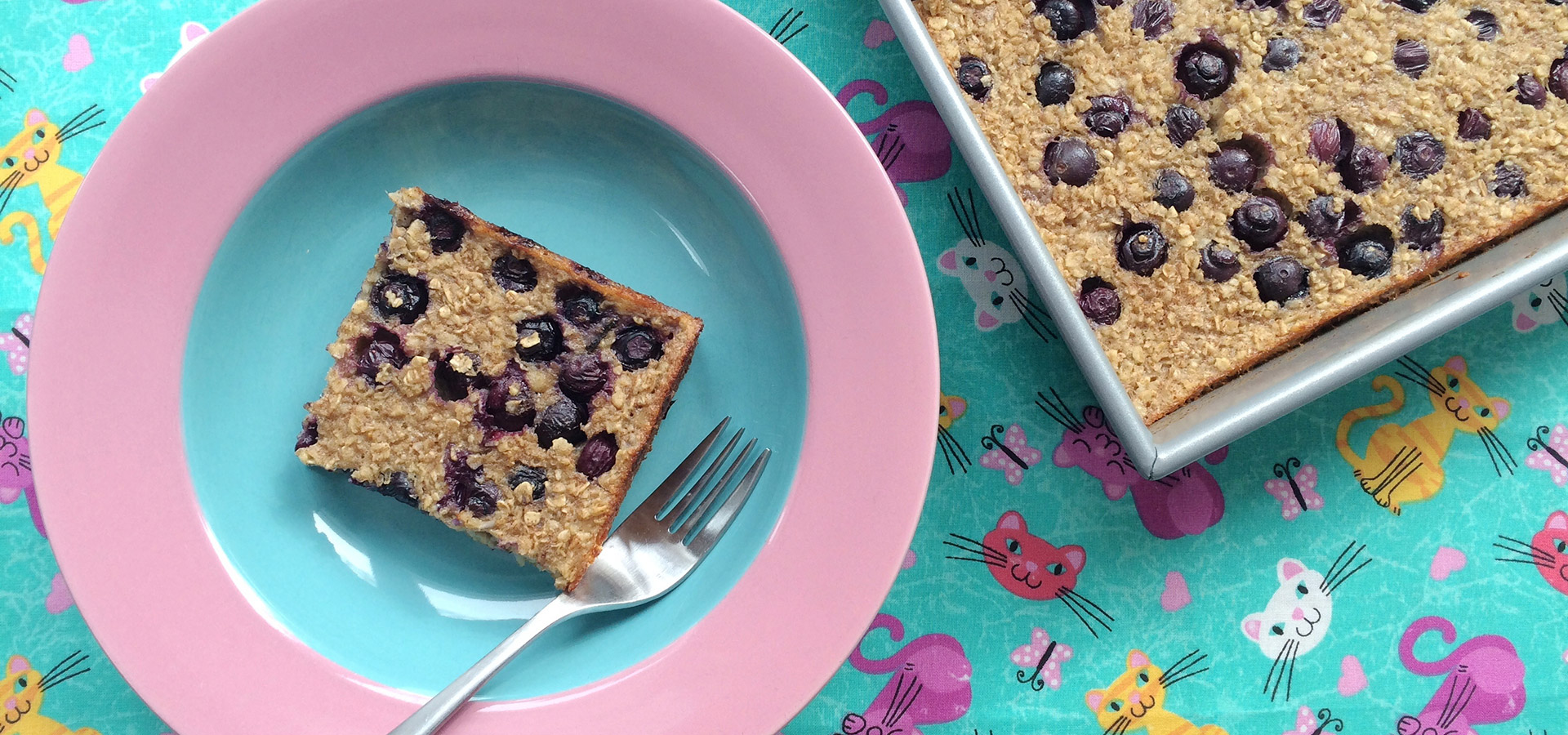
Whole Grain Goodness: Bizcocho de avena y banana con arándanos
- Home
- Live Well Blog
- Whole Grain Goodness: Bizcocho de avena y banana con arándanos
Comer alimentos integrales, como arroz integral, tortillas de maíz, avena y panes y pasta 100 % integrales, es bueno para la salud de tu familia. Los cereales integrales son más nutritivos que los refinados; contienen fibra, que nos llena y mantiene saciados durante más tiempo, y también son buenos para el corazón.
Al menos la mitad de los cereales que elija cada día deben ser integrales. Para alcanzar ese objetivo, elije cereales integrales o muffins por la mañana, haga wraps con tortillas integrales para el almuerzo y prueba el arroz integral o la pasta integral para la cena.
Bizcocho de avena y banana con arándanos
Si a tus hijos les gusta la avena, les encantará este bizcocho para el desayuno. Se elabora con avena de cocción rápida, arándanos, banana, leche y huevos, por lo que cada porción aporta fibra, proteínas y calcio, así como el delicioso dulzor natural de la fruta.
RINDE 8 PORCIONES
- 1 huevo grande
- 1 banana madura, pelada y pisada (aproximadamente ½ taza)
- ¼ de taza de azúcar granulada
- 1 cucharadita de extracto de vainilla
- 2 tazas de leche baja en grasa al 1 %
- 2 tazas de avena de cocción rápida
- 1 cucharadita de polvo de hornear
- 1 cucharadita de canela en polvo
- ¼ de cucharadita de sal
- 1 taza de arándanos frescos o congelados
- Precalienta el horno a 350° F. Engrasa ligeramente o recubre un molde para horno de 9 x 9 pulgadas con aceite en aerosol antiadherente y reserva.
- En un recipiente grande, mezcla bien el huevo, la banana, el azúcar y la vainilla. Incorpora la leche. En otro recipiente, mezcla la avena, el polvo de hornear, la canela y la sal. Incorpora la mezcla de avena a la mezcla de leche y remueve para integrar. Incorpora los arándanos y vierte la mezcla en el molde preparado. La masa será muy líquida; pero no te preocupes, porque la avena absorberá el líquido al cocinarse.
- Coloca con cuidado el molde en el horno y hornea unos 35 minutos, o hasta que la parte superior se dore y los copos de avena estén cocidos. Deja enfriar durante 10 minutos, córtalo en rebanadas o sírvelo con una cuchara.
Consejo: Para hacer que esta comida de la mañana sea aún más especial, cubre cada porción con una cucharada de yogur de vainilla bajo en grasa.
170 calorías, 3 g de grasa (0.5 g de grasas saturadas), 180 mg de sodio, 30 g de hidratos de carbono, 3 g de fibra, 6 g de proteína, 10 % de calcio, 8 % de hierro.
Prueba a ciegas de cereales integrales
ASÍ FUNCIONA:
1
Pregúntales a tus hijos si quieren jugar a probar comidas a ciegas. Si dicen que sí, pídeles que cierren los ojos o que se pongan una venda.
Tuesta una rebanada de pan blanco y otra de pan integral. Cubre cada una de ellas con la mermelada, jalea o mantequilla de maní favorita de tu hijo. Pídele que pruebe un bocado de cada rebanada y luego vote por su favorita. Pueden levantar las dos manos si hay empate.
2
3
Haz la misma prueba de sabor con pasta de harina refinada y pasta integral. Hierve una taza de cada una, mézclalas con salsa para pasta y luego deja que los niños emitan su voto.
Otros alimentos para comparar son las galletas integrales frente a las normales, los bagels integrales frente a los de harina refinada y un cereal integral para el desayuno frente a uno refinado.